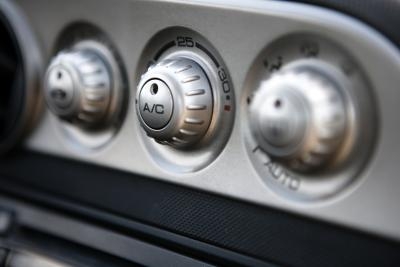
Air conditioning, or A/C, is a comfort item that many people take for granted, even in automobiles. Most people don't imagine what it would be like to have no air conditioning in their car, until a problem occurs. The compressor is a common cause of A/C problems. It is an expensive part to replace, so it is important to be sure that the compressor is the problem before making the repair. The only way to know if the compressor is bad is to do a process of elimination by checking the other possible causes first.
Check for a bad fuse. Refer to the car's owner manual to locate the position of the specific fuse that governs power to the car's electrical system. Access the fuse panel, typically located under the steering wheel, and find the fuse that corresponds to the A/C. Use a fuse puller to remove the fuse. Hold it up to the light to inspect it for breaks or burns. If the fuse looks bad, replace it with a new fuse and retest the air conditioning.
Test the belt and pulley. The compressor will have a belt-driven pulley attached to it. Check to see if the belt is broken. If so, replace it with a new belt. If the belt is in tact, try to rotate the pulley. Use your hand to turn the pulley one complete cycle. If the pulley is stiff and will not turn, the problem with the air conditioning is that the pulley bearings are bad and must be replaced.
Use an electrical multimeter to test the air conditioner's coil. Place the red node of the multimeter on the positive terminal of the coil and touch the black node anywhere on the car body. Check to see if electric current is present in the coil.
Inspect the A/C clutch. The clutch is a lever that is used to engage and disengage the air conditioning. Grab the clutch with your hand and see if it will move back and forth. If the clutch will not move, the compressor shaft has seized, and the whole compressor must be replaced.